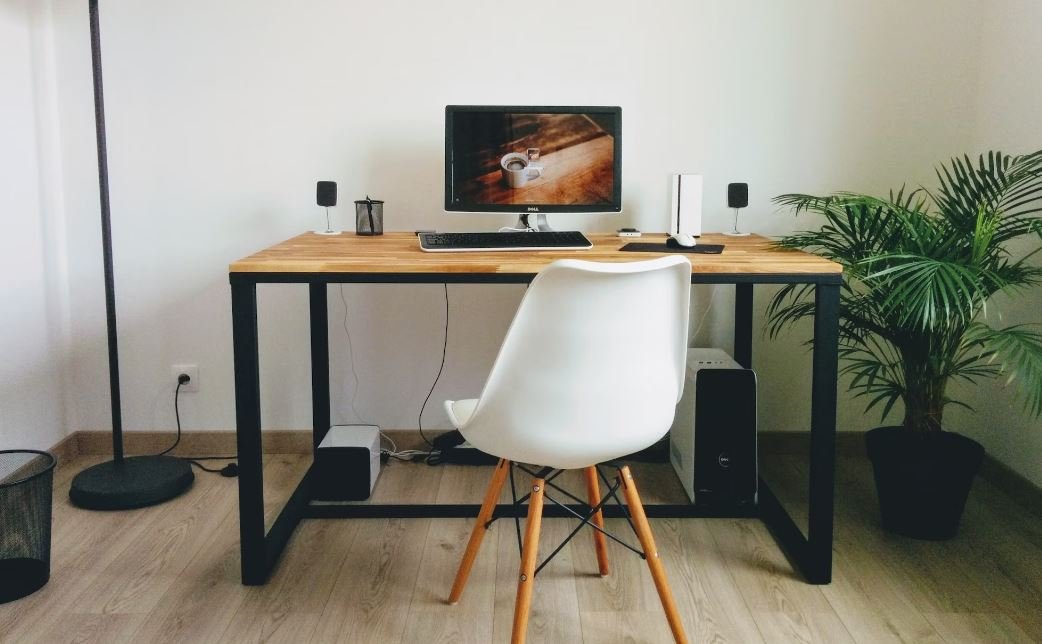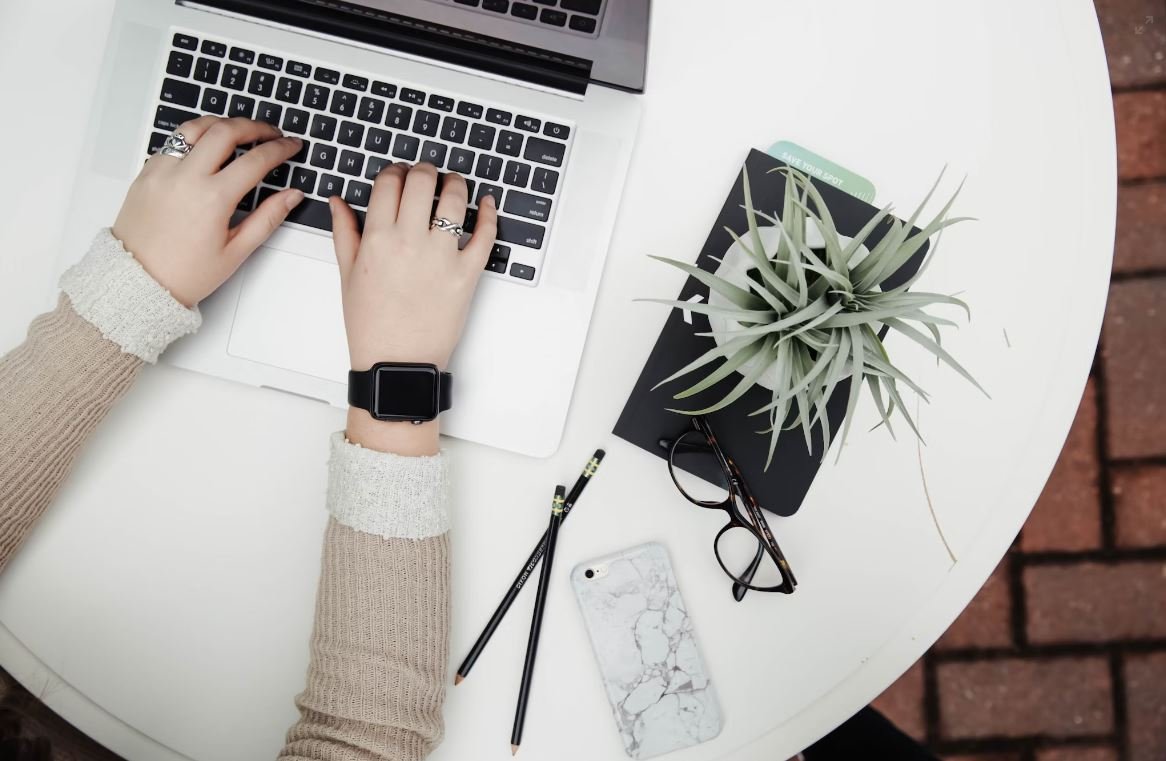Equipment Needed for a Podcast Studio
If you’re starting a podcast, having the right equipment is essential to ensure high-quality audio production.
Key Takeaways:
- Investing in quality podcasting equipment is crucial for producing professional sound.
- Essential equipment includes a microphone, headphones, audio interface, and recording software.
- Consider additional accessories like a microphone stand, pop filter, and acoustic treatment for improved sound quality.
1. Microphone
The microphone is the key component of any podcasting setup. Choose a dynamic or condenser microphone based on your budget and recording environment.
Using a condenser microphone can capture more details, but it may also pick up background noise.
2. Headphones
Invest in a good pair of headphones to ensure accurate monitoring and sound quality during recording and editing.
High-quality closed-back headphones are recommended to isolate external noise and prevent audio leakage during recording.
3. Audio Interface
An audio interface connects your microphone and headphones to your computer. Choose one with sufficient inputs and outputs for your needs.
A USB audio interface is user-friendly and suitable for most podcasters.
4. Recording Software
Select recording software that allows you to capture, edit, and export your podcast episodes. Popular choices include Audacity, GarageBand, and Adobe Audition.
Adobe Audition offers advanced editing features and is often preferred by professional podcasters.
Tables
| Microphone | Pros | Cons |
|---|---|---|
| Dynamic | – Durable and less sensitive to background noise. – Ideal for recording multiple people. – Suitable for less controlled recording environments. |
– Can lack detail in sound quality compared to condenser microphones. – May require a separate preamp for optimal performance. |
| Condenser | – Captures rich, detailed sound. – Ideal for controlled recording environments. – Often used by professional podcasters. |
– More sensitive to background noise. – Requires phantom power from an audio interface or mixer. – Higher cost compared to dynamic microphones. |
| Recommended Recording Software | Pros | Cons |
|---|---|---|
| Audacity | – Free and open-source software. – Suitable for beginners. – Available for multiple platforms. |
– Less advanced editing features compared to other software. |
| GarageBand | – Free software exclusively for Mac users. – User-friendly interface. – Supports multi-track recording. |
– Limited availability for non-Mac users. – Less advanced functionality than professional-grade software. |
| Adobe Audition | – Professional-grade recording and editing capabilities. – Vast array of audio effects and restoration tools. – Perfect for complex podcast editing. |
– Requires a subscription to Adobe Creative Cloud. – Steeper learning curve for beginners. |
| Additional Accessories | |
|---|---|
| Microphone Stand | An adjustable stand helps you find the perfect positioning for your microphone. |
| Pop Filter | Reduces plosive sounds (p and b sounds) that can cause distortion in the recording. |
| Acoustic Treatment | Improves sound quality by reducing echo and reverberation in the room. |
5. Accessories
In addition to the basic equipment, consider investing in accessories to enhance your podcasting experience.
- Use a microphone stand for easy and adjustable positioning of your microphone.
- Attach a pop filter to reduce plosive sounds that can distort the audio.
- Consider adding acoustic treatment to your recording space to minimize echo and improve sound quality.
Final Thoughts
Setting up a podcast studio requires careful consideration of the essential equipment and accessories. Investing in quality equipment ensures professional audio production and enhances the overall listening experience for your audience.

Common Misconceptions
Misconception 1: Expensive, professional-grade equipment is necessary for a podcast studio
One common misconception about podcast studios is that they require expensive, professional-grade equipment to produce high-quality shows. However, the reality is that you can start a podcast with minimal equipment and still achieve good results.
- Podcast starter kits often include all the basic equipment needed
- A good quality USB microphone is sufficient for most podcasting needs
- Investing in soundproofing can significantly improve audio quality
Misconception 2: A dedicated studio space is required
Another misconception is that you need a dedicated studio space to start a podcast. While having a dedicated area for recording can be beneficial, it is not a necessity.
- Any quiet space, such as a bedroom or office, can be converted into a makeshift studio
- Using soundproofing materials can help minimize background noise
- Audio editing software can further enhance and clean up the recorded audio
Misconception 3: Technical expertise is required to set up and operate the equipment
Many people assume that they need to possess technical expertise to set up and operate podcasting equipment. However, with advancements in technology, podcasting has become more user-friendly than ever before.
- Most podcast equipment comes with detailed instructions for easy setup
- Online tutorials and resources are available to guide beginners through the process
- Podcasting software often has user-friendly interfaces
Misconception 4: Expensive software is necessary for editing and post-production
Contrary to popular belief, you don’t need to spend a fortune on expensive software for editing and post-production purposes. There are several free or affordable options available that offer a wide range of features.
- Free audio editing software like Audacity has robust editing capabilities
- Paid software like Adobe Audition provides advanced features, but can be costly
- Podcast hosting platforms often offer integrated editing tools
Misconception 5: A large audience is required for podcasting success
Lastly, many aspiring podcasters believe that a large audience is essential for podcasting success. While having a substantial listener base is desirable, it is not the sole determinant of podcasting success.
- Consistency, quality content, and engagement are more important than audience size
- Building a niche audience with a specific interest can lead to loyal listeners
- Word-of-mouth marketing and social media promotion can help attract new listeners

Table: Most Popular Podcast Hosting Platforms
The table below showcases a list of the most popular podcast hosting platforms, based on their user base and features offered. These platforms provide a reliable and user-friendly solution for podcasters to upload and distribute their episodes.
| Podcast Hosting Platform | Monthly Cost (Basic Plan) | Maximum Number of Episodes | Analytic Metrics |
|---|---|---|---|
| Libsyn | $5 | 250 | Yes |
| Anchor | Free | Unlimited | Yes |
| Podbean | $9 | Unlimited | Yes |
| Blubrry | $12 | Unlimited | Yes |
| Spreaker | $20 | 500 | Yes |
Table: Essential Equipment for Podcast Recording
This table displays the essential equipment required to set up a podcast recording studio. Each item contributes to ensuring high-quality audio and a smooth recording process.
| Equipment | Price Range |
|---|---|
| Microphone | $50 – $500 |
| Headphones | $20 – $300 |
| Audio Interface | $100 – $400 |
| Pop Filter | $10 – $50 |
| Boom Arm | $30 – $100 |
| Shock Mount | $20 – $100 |
| Acoustic Panels | $50 – $200 |
Table: Comparison of Podcast Editing Software
The table below compares different podcast editing software options, showcasing their features and pricing details. These tools assist in refining audio recordings, adding effects, and editing out any unwanted portions.
| Podcast Editing Software | Price | Key Features |
|---|---|---|
| Audacity | Free | Multi-track editing, Noise reduction |
| Adobe Audition | $20.99/month | Advanced editing tools, Sound effects library |
| GarageBand | Free | Easy-to-use interface, Pre-made loops |
| Logic Pro X | $199.99 | Professional-grade editing, Virtual instruments |
Table: Benefits of Remote Podcast Recording
This table highlights the benefits of remote podcast recording, which has gained popularity due to its convenience and flexibility. It allows hosts and guests to connect and record from different locations, eliminating the need for physical studio setups.
| Benefits | Description |
|---|---|
| Location independence | Record from anywhere in the world |
| Cost-effective | Savings on travel and studio rental expenses |
| Guest flexibility | Easy coordination with guests from diverse locations |
| Scheduling convenience | No need to align different schedules for in-person recording |
Table: Podcast Revenue Generation Strategies
This table outlines various strategies to generate revenue from podcasts, as many podcasters seek to monetize their content. These methods can help podcasters earn income while delivering valuable content to their listeners.
| Revenue Generation Method | Description |
|---|---|
| Advertising | Includes sponsorships and selling ad spots |
| Merchandise | Selling branded merchandise related to the podcast |
| Donations | Listeners voluntarily contribute to support the podcast |
| Membership | Offer exclusive content or benefits to paying members |
Table: Podcast Audience Demographics
This table presents the demographics of podcast listeners, helping podcasters gain insights into their target audience. Understanding the age range, gender distribution, and interests of listeners can assist in tailoring content to their preferences.
| Demographic | Percentage |
|---|---|
| Age: 18-34 | 32% |
| Age: 35-54 | 48% |
| Age: 55+ | 20% |
| Male | 55% |
| Female | 45% |
Table: Podcast Episode Length Recommendations
This table provides guidelines for podcast episode lengths, considering the preferences of listeners. It suggests optimum durations for different types of podcasts to maintain engagement and optimize listener satisfaction.
| Podcast Type | Ideal Episode Length |
|---|---|
| Talk Shows/Interviews | 30-60 minutes |
| True Crime | 45-75 minutes |
| News/Current Affairs | 15-30 minutes |
| Comedy | 30-45 minutes |
| Education/Instructional | 15-30 minutes |
Table: Podcast Release Schedule Recommendations
This table offers recommendations for podcast release schedules that encourage consistency and engagement. Determining the optimal frequency for releasing episodes helps build a dedicated audience and maintains their interest in the podcast.
| Release Schedule | Frequency of Episodes |
|---|---|
| Weekly | 1 episode per week |
| Biweekly | 1 episode every two weeks |
| Monthly | 1 episode per month |
| Seasonal | Multiple episodes released within a particular season |
Table: Popular Podcast Genres
This table showcases various popular podcast genres that cater to diverse interests and audiences. Identifying a suitable genre provides a foundation for crafting engaging content that aligns with listeners’ preferences.
| Podcast Genre | Description |
|---|---|
| True Crime | Exploring real-life criminal cases and mysteries |
| Comedy | Humorous discussions and comedic content |
| News/Politics | Updates on current events, politics, and world news |
| Technology | Focuses on tech news, gadgets, and innovations |
| Education | Informative content covering various subjects |
Podcasting has emerged as a popular and engaging medium for sharing information and entertaining audiences. This article explored the equipment necessary for setting up a podcast studio, including microphones, headphones, and audio interfaces. A comparison of podcast hosting platforms and editing software highlighted the various options available to podcasters. Additionally, the benefits of remote recording, revenue generation strategies, audience demographics, and recommendations for episode lengths and release schedules were discussed. Understanding these aspects can assist aspiring podcasters in creating compelling content and establishing a successful podcast.
Frequently Asked Questions
Title: Equipment Needed for a Podcast Studio
What are the essential pieces of equipment required for setting up a podcast studio?
- Microphones
- Headphones
- Audio Interface
- Mixer
- Pop Filter
- Boom Arm
- Shock Mount
- Studio Monitors
- Acoustic Treatment
- Recording Software
What type of microphones should I consider for my podcast studio?
The most common microphones used in podcasting are dynamic microphones, such as the Shure SM7B or Electro-Voice RE20. These microphones are known for their durability and ability to capture clear vocals.
Why do I need headphones for my podcast studio?
Headphones are necessary to monitor the audio quality during recording or editing. They allow you to hear details and make adjustments to ensure the best sound possible.
What is an audio interface, and why is it important for a podcast studio?
An audio interface is a device that connects your microphones to your computer or recording equipment. It converts analog audio signals into digital data that can be processed by your software. It is important because it ensures high-quality sound transfer and reduces latency.
Do I need a mixer for my podcast studio?
A mixer is not mandatory but can be useful in a podcast studio, especially if you have multiple microphones or other audio sources. It allows you to control audio levels, apply effects, and mix different audio signals together.
Why should I use a pop filter in my podcast studio?
A pop filter, also known as a windscreen, helps reduce plosive sounds (e.g., “p” and “b” sounds) that can cause distortion in the microphone. It is placed in front of the microphone to prevent these unwanted sounds from reaching the microphone diaphragm.
What is a boom arm and why is it useful in a podcast studio?
A boom arm is a stand that holds the microphone securely, allowing you to position it at the optimal height and distance. It helps reduce vibrations and handling noises while providing easy adjustability and flexibility during recording sessions.
What is a shock mount, and why is it recommended for podcast studios?
A shock mount is a device used to isolate the microphone from vibrations and mechanical noises that may occur on the mounting system. It helps achieve better sound quality by reducing unwanted sounds caused by external factors.
Why should I consider studio monitors for my podcast studio?
Studio monitors are high-quality speakers designed for accurate audio reproduction. They allow you to hear your recorded and edited podcast episodes with clarity and precision, ensuring that your final product sounds great on different playback devices.
Why is acoustic treatment important in a podcast studio?
Acoustic treatment involves placing sound-absorbing panels, bass traps, and diffusers in a studio space to control reflections, echoes, and reverberation. It helps create a controlled acoustic environment, reducing unwanted background noise and ensuring cleaner audio recordings.
What recording software should I use for my podcast studio?
There are various recording software options available, such as Audacity, Adobe Audition, GarageBand, and Logic Pro. Choose a software that suits your budget, operating system, and workflow preferences. It should provide essential features like multi-track recording, editing capabilities, and export options.


Leave a Reply